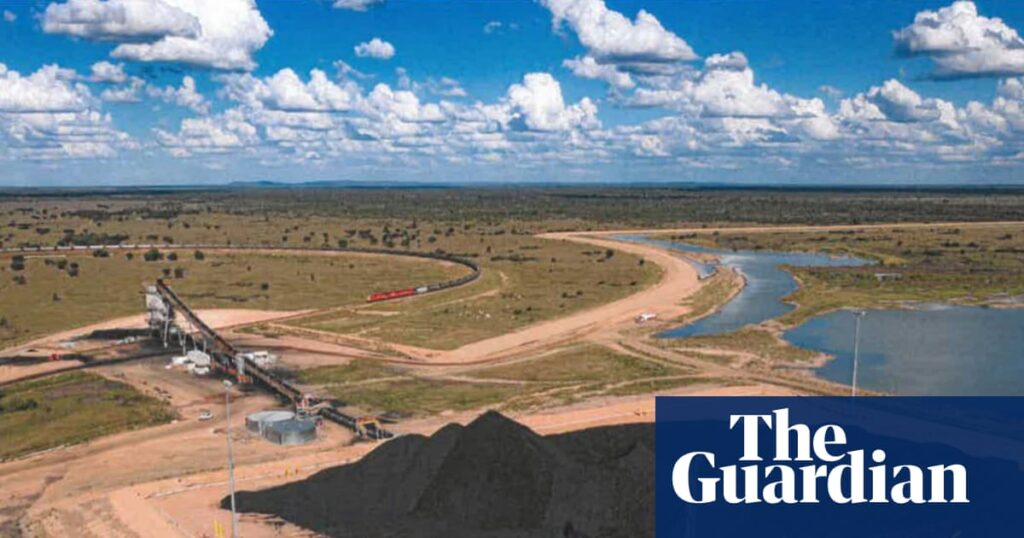
The Carmichael coal mine, a venture by the Indian conglomerate Adani, was once heralded as a financial boon for Australia, promising billions in taxes and royalties. Yet, despite its operational status during a commodity price boom, the mine has not contributed a cent in company tax to Australia’s coffers. This situation, while surprising to some, was entirely foreseeable and has resulted in significant forgone revenue for the nation.
To understand how this scenario unfolded, one must look back to 2010, a pivotal year marked by intense climate debates in Canberra. It was during this period that Adani proposed a colossal mining project in the Galilee Basin, aiming to extract up to 60 million tonnes of coal annually for 150 years. This proposal promised to usher in a new era of prosperity, particularly for central Queensland, with projections of over 10,000 full-time jobs and $22 billion in taxes and royalties.
The Economic Allure and Environmental Concerns
The economic promise of the Carmichael mine was undeniable, with Adani’s then-head of mining, Jeyakumar Janakaraj, emphasizing the reinvestment of $22 billion into frontline services. This pledge became a central theme in Adani’s promotional efforts, featuring prominently in advertisements and public statements.
However, the environmental cost was equally staggering. According to the Australia Institute, the mine’s lifetime emissions would total 4.7 billion tonnes of CO2-equivalent, surpassing the annual emissions of major cities like Tokyo and New Delhi. This sparked a fierce battle between environmentalists and coal industry supporters, with the former challenging Adani’s environmental approvals in court.
Shifting Promises and Economic Realities
By 2015, Adani’s initial job projections were significantly revised. As Rod Campbell from the Australia Institute noted, the company reduced its job estimates to under 1,500, a far cry from the original 10,000. Similarly, the projected coal output was scaled down from 60 million tonnes to just 10 million tonnes annually. Despite these reductions, the anticipated corporate tax revenue remained optimistic, with forecasts suggesting $400 million per year.
Yet, these projections did not account for sophisticated tax minimization strategies. By 2017, Adani’s efforts to secure a subsidized loan from the Commonwealth were faltering, as global banks expressed concerns over the project’s economic viability and potential reputational damage.
Complex Finances and Tax Implications
Adani’s financial structure has been described as “extremely complex and opaque” by Tim Buckley, director of Climate Energy Finance. This complexity, coupled with numerous related-party transactions, has resulted in the mine consistently reporting paper losses despite significant revenue generation. In 2025, for instance, the mine earned $1.27 billion in revenue but recorded no taxable profit due to these financial maneuvers.
“Every page of their financials is like, ‘bing, bing, warning bells going off’,” remarked Jason Ward from the Centre for International Corporate Tax Accountability and Research.
While Adani has paid royalties, amounting to $78.6 million in 2025 and $83.5 million in 2024, the absence of company tax payments has sparked frustration among Australian politicians. Independent senator David Pocock and MP Zali Steggall have both criticized the lack of accountability and called for reforms in the approvals process to ensure companies meet their promises.
Looking Ahead: Calls for Reform and Accountability
The Carmichael mine serves as a cautionary tale for policymakers. As Steggall points out, companies often overstate the benefits of their projects, only for these promises to “magically disappear” once operations commence. This pattern highlights the need for stricter conditions and accountability measures in the approval of resource projects.
As Australia grapples with the implications of this situation, the broader conversation around resource management and tax accountability continues to evolve. The Carmichael mine’s story underscores the importance of balancing economic development with environmental stewardship and fiscal responsibility.
Moving forward, it remains to be seen how Australian policymakers will address these challenges and ensure that the nation’s resources are managed in a way that benefits all stakeholders.







